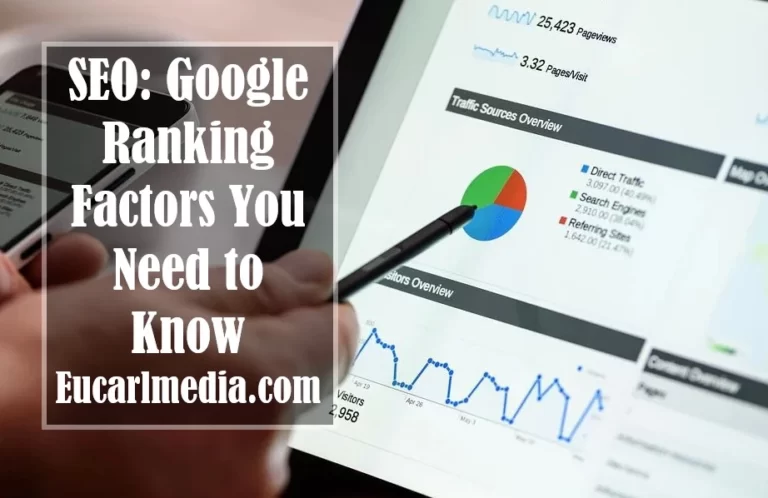How To Write Perfect SEO Title And Description
Simply said, “about” is what the word “meta” refers to. The meta information that can be found on your website could be in the form of meta tags or bits of snippet codes.
However, in search engine optimization, the meta tags that are most important are the title tags and the meta descriptions of the pages. Otherwise known as the “SEO title” and “SEO description.”
Now, these SEO title and descriptions are what provide information to Google regarding the subject matter of the Web page. Users will be able to read the information that is provided in these tags as it appears in SERPs.
As a consequence of this, if you are interested in learning how to construct SEO title tags and descriptions to enhance exposure and click-through rates, then this article is great for you to read.
What Are SEO Title Tags?
An SEO title tag is a clickable version of a web page’s title that shows up next to the results on search engine results pages (SERPs). These are the kinds of titles that could also be used for the H1 tag associated with your content.
Note: The SEO title and description could also be referred to as the “Page title and description.” A lot of times, the title is called the “HTML title” or the “website title.”
On the other hand, most CMS, including WordPress, will always make sure that each web page’s search engine optimization title tags are set up in a way that follows Google standards.
When you are learning how to write SEO title tags, it is important that you always make your titles clear and brief because Google is only able to display between 60 and 70 characters of a page’s title.
What Are SEO Descriptions?

While still discussing the SEO title and description, let’s now talk about the meta description. It is another essential key on-page element that is quite important.
However, this meta description does have an effect on how many hits your content receives when it appears in the SERPs of Google. It does not, however, have any direct bearing on the ranking that a page receives on Google.
On the other hand, some people might say that using a focus keyword in your meta description will affect your content’s ranking and a lot of other things, but this is not entirely true.
But the reality of the situation is that in order to get more clicks on your content, you need to have a well-written SEO title and description tags. This is due to the fact that your content is now distinct from that of other websites.
That’s the reason getting your description tag in the perfect format is very important. Hence, the following are the core factors you should consider while creating a description
- Keep the length of your description and any other functions related to metadata to a minimum at all times.
- Try to include as much of the information on the website as you can in the description.
- You can describe the content in a way that shows what your brand is all about.
- The call to action (CTA) signal should be driven by the description, so make it as convincing as possible.
How To Write SEO Title Tags That Stand Out
After having gained an understanding of the significance of SEO titles and descriptions as well as how to craft ideal description tags, the next step is to learn how to write SEO title tags that stand out.
When it comes to writing search engine optimization title tags, we have outlined below the best practices that you should always adhere to. Enjoy!
Read Also: WordPress SEO Checklist: How To Increase Your Google Rank
1. Include Relevant Keywords
When learning how to write SEO title tags, it’s important to know how important it is to include both your focus keyword and your seed keyword in your title to make sure it’s fully optimized.
The strategy that places your seed keyword at the beginning of your SEO title tag is the one that yields the best results. This makes it easier for search engines to determine, in a short amount of time, what the material is about.
If you can’t include your target keyword in the SEO title and description of your web page, you should try to include some version of that keyword in order to match the user’s search intent.
2. Rely On Various Psychological Triggers
Making use of psychological language in the title tags of your SEO-optimized pages is another way to achieve success. This strategy is especially helpful when writing SEO Product titles, because it makes it more likely that people will click on the content.
To find the right psychological words to use to increase sales, all you need is a deep understanding of what is being said in the ad or content. You have many ways to send these psychological signals, and you can read blog posts to get better at using them.
3. Gear Your Writing Toward The Reader
To learn how to write a perfect SEO title and description, keep in mind that the consumption of your readers should take precedence over the intent of search engines in all of your content creation.
This means that your SEO title tags should always include useful information that will definitely help people understand a situation and solve any problems they may be having.
Always ask yourself: How will this title benefit my readers? It will help you understand how to create the title. You still, however, can learn more about readers’ intent by enrolling in one of these beginners’ guides to SEO.
4. Try Long Keywords, But Pay Attention To the Length

When the percentage of keyword difficulty (KD%) is high, the importance of using lengthy phrases and keywords cannot be overstated. Long-tail keywords should always be used when writing the SEO title and description.
The implementation of this practice has been proven to be more effective. EucarlMedia’s research showed that titles with 13–17 words got 78.5% more social shares than titles with less than 13 words.
Therefore, your headline should be long enough to interest your audience but short enough to make it easier to read. This should be done while still maintaining the meaning of the title for users and search engines.
5. Optimize Your Title For SERPs Appearance
You should always research and check how Google and other search engines have ranked the top articles before beginning to create your SEO title and description. You should then attempt to imitate the style and approach of the top-ranked articles.
Google will always show the best results for each search query on their SERPs, but if your SEO title tags don’t meet their requirements, your content won’t show up on their search engine results page.
Therefore, it is always vital to analyze how Google will display the search results in order to improve your content to match the requirements of Google’s SERPs criteria. This can be done by visiting the Google Search Console and clicking on the “Search Results” tab.
6. Avoid Being Repetitive Or Stuffing Keywords
You should never use several variations of the same keyword in the title and description of your SEO page. This practice, known as “keyword stuffing,” is one of the reasons why Google flags content like this.
It is also recommended that you steer clear of utilizing the same primary keyword in multiple blog entries across your website. This practice is known as “keyword cannibalization,” and the Google ranking system does not approve of it.
If your SEO title and description are set up like that, your website may not work as well, and both users and search engines will have a harder time understanding what your site is about.
7. Be Specific With Your SEO Title Tags
You should make it your goal to center each of your SEO titles and descriptions on a particular objective so that search engine bots can crawl and index your content more quickly and with less effort.
On the other hand, developing customized and one-of-a-kind SEO title tags for blog entries is a simple process. However, e-commerce and business websites do deal with the difficulties associated with keyword reputation.
This indicates that the majority of their content does not serve any particular purpose. Because of this, you should constantly keep this in mind while you are coming up with unique page titles to avoid traffic cannibalization.
Conclusion: How To Write An SEO Title And Description

There are other ways to increase your website’s visibility, such as by using SEO optimized title tags, even though it may at times appear to be fairly difficult to work on improving the search engine optimization of your website.
This SEO title and description, as well as URLs and other metadata, could improve your click-through rate and SEO. But for more on-page search engine optimization tips, check out other EucarlMedia SEO checklists.
Quick Guide: How To Write SEO Title Tags To Gain High CTR
- The optimal length for your SEO title tag should be between 55 and 60 characters.
- Make sure that your title tags always include seed keywords.
- Provide an accurate description of the information contained on the website.
- Start using statements that begin with “How,” “Where,” “What,” and “Why.” It makes it easier for your readers to understand what the content is about and why it’s important to them.
- You should always use Power words like “proven,” “perfect,” “uncovered,” and so on to get people to click on your link.
- Keep in mind that the tone of your title should be either positive or negative. This may act as a psychological trigger for certain people.
- Write unique SEO title tags. Google does not permit duplicate content under any circumstances.
- Finally, make sure to reduce the complexity of your title to a minimum.






